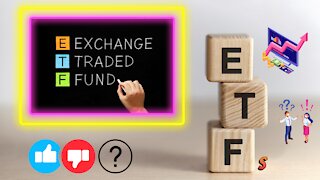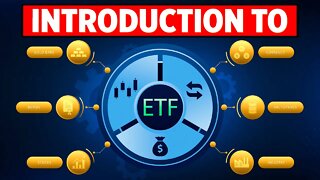Understanding Mutual Funds & ETFs
Mutual funds and exchange-traded funds (ETFs) are both popular investment vehicles that allow individuals to invest in a diversified portfolio of assets. However, they have some key differences in terms of structure, management, and trading. Here's an overview of mutual funds and ETFs:
Mutual Funds:
Structure:
Mutual funds are investment pools managed by professional portfolio managers. When you invest in a mutual fund, you are buying shares of the fund itself.
Management Style:
Mutual funds are actively managed, which means that portfolio managers make investment decisions with the goal of outperforming a specific benchmark index or achieving the fund's stated objectives.
Buying and Selling:
Mutual funds are typically bought or sold at the end of the trading day at the net asset value (NAV) price, which is calculated based on the closing prices of the fund's underlying securities.
Costs:
Mutual funds may charge various fees, including management fees, expense ratios, and sales charges (loads). These fees can vary widely among funds.
Diversification:
Mutual funds offer diversification because they pool money from multiple investors to buy a diversified portfolio of stocks, bonds, or other securities.
Tax Efficiency:
Mutual funds can be tax-efficient, but they may distribute capital gains to shareholders, potentially creating taxable events for investors.
Exchange-Traded Funds (ETFs):
Structure:
ETFs are investment funds that are traded on stock exchanges, just like individual stocks. When you buy shares of an ETF, you are buying shares of the fund itself, but you can trade them throughout the trading day.
Management Style:
ETFs can be either actively managed or passively managed. Passively managed ETFs aim to replicate the performance of a specific index, such as the S&P 500, by holding a portfolio of securities that mirrors the index's composition.
Buying and Selling:
ETFs can be bought and sold throughout the trading day at market prices. This flexibility allows investors to take advantage of intraday price fluctuations.
Costs:
ETFs typically have lower expense ratios compared to many mutual funds. They are known for their cost-efficiency, but investors may still incur brokerage commissions when buying and selling ETF shares.
Diversification:
Like mutual funds, ETFs offer diversification by holding a basket of securities. They can track various asset classes, sectors, or regions.
Tax Efficiency:
ETFs are often more tax-efficient than mutual funds because they are structured to minimize capital gains distributions. This can result in fewer taxable events for investors.
Key Considerations:
Liquidity: ETFs offer greater intraday liquidity because they are traded on exchanges, while mutual funds are priced and traded once a day.
Minimum Investment: Mutual funds often have minimum investment requirements, while ETFs have no such minimums, making them more accessible to investors.
Dividend Payments: Mutual funds may distribute dividends and capital gains at the end of the year, while ETFs can distribute them more frequently, which may affect tax considerations.
Trading Costs: ETFs may incur brokerage commissions, while mutual funds may have sales charges or loads.
Investment Objectives: The choice between mutual funds and ETFs may depend on your investment goals, trading preferences, and tax considerations.
Both mutual funds and ETFs can be valuable tools for building a diversified investment portfolio, but the choice between them depends on individual circumstances and preferences. Many investors use a combination of both to achieve their financial goals while managing risk and costs effectively.
-
 4:48
4:48
Banking Basic
5 months agoMutual Funds & ETFs Explained: Which Is Better?
11 -
 6:13
6:13
Website with WordPress
11 months agoA Biased View of "Understanding Mutual Funds and ETFs for Your Retirement Portfolio"
16 -
 7:30
7:30
Grow With Sanjay Daslaniya
10 months agoThe Truth About Mutual Funds What You Need to Know #investing #mutual funds
45 -
 4:38
4:38
Banking Basic
3 months agoEASY Strategy for Investing: ETFs Explained
2 -
 11:41
11:41
Financial Education 101
1 year agoWhat are ETFs and how do they work? Exchange Traded Funds explained (ETFs 101)
34 -
 16:08
16:08
ThePMP
9 months agoThe EASY Guide to Understanding Mutual Funds- Eps.333 #mutualfunds #indexfundinvesting #easy
-
 4:23
4:23
Peak Retirement Planning, Inc.
11 months agoShould You Invest in ETFs or Mutual Funds?
2 -
 18:25
18:25
FinancialEducation101
1 year agoMutual Funds VS ETF VS Index Funds (Everything You need to know)
9 -
 23:44
23:44
The SPX Investing Program
2 years ago $0.02 earnedWhat are ETFs?
193 -
 11:41
11:41
FinancialEducation101
1 year agoWhat are ETFs and how do they work? Exchange Traded Funds explained (ETFs 101)
17